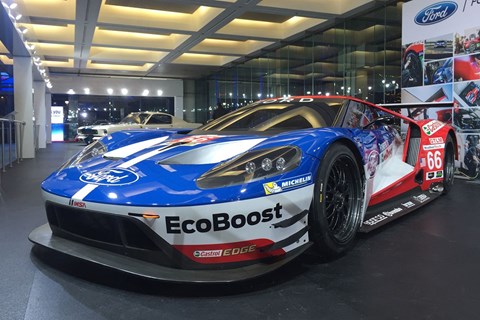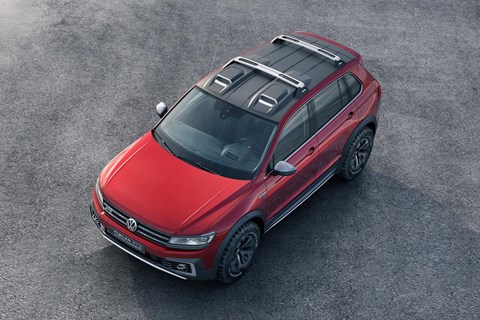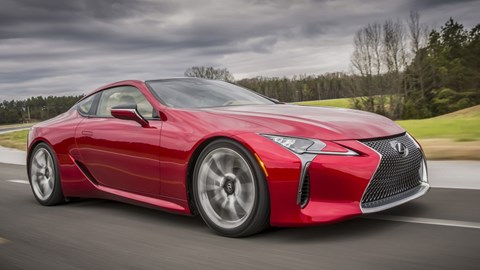► CAR’s editor assesses the show
► Full Detroit motor show 2016 review
► The key trends, and key cars
Ch-ch-ch-changes, turn and face the strange,
Ch-ch-ch-changes, just gonna have to be a different man
Time may change me, but I can’t trace time
We woke up to the news that David Bowie, the chameleon of rock music, had died. And everywhere we went at the North American International Auto Show, it seemed that car makers were paying tribute by ch-ch-ch-changing, reinventing themselves, adopting a new position, strategy or design language.
It seems only right in Detroit to start with Ford. Company scion Bill Ford stood on stage and told the media, dealers and employees that his great grandfather’s firm was no longer just an auto company, but an auto and mobility company. ‘The management team wants to create a different future for Ford Motor Company,’ he said. ‘The plan is to make people’s lives better,’ by avoiding the nightmare of a gridlocked planet with its 9-billion people plagued by resultant economic, environmental and health implications.
Ford vows digital power will build the freeway out of trouble: autonomous cars to reduce accidents (Ford claims the world’s largest autonomous fleet and promises the first tests in snowy conditions), car sharing (a trial in Texas will experiment with up to six people sharing a lease on a single car, with variable monthly payments apportioned according to usage), a concierge service to find you a parking space, and new consumer ‘hubs’ in major cities (starting in New York, London, San Francisco, Shanghai) to promote Ford’s latest innovations and mobility solutions. ‘Just gonna have to be a different man,’ indeed.

Not that Ford forgot the autos part of the mission statement. Last year the Blue Oval blew Detroit away with the GT, the supercar that will return to Europe’s blue riband endurance race in June, the scene of its historic 1966 triumph.
This year’s performance icon was more undisputedly American, the F150 Raptor. The ballistic pick-up shares the GT’s mighty 3.5-litre V6 heart, though mated to a 10-speed transmission and four-wheel drive. Now that America’s best-selling truck is made from aluminium, some 200kg has been shed, boosting the power-to-weight ratio. What a way to go dune-bashing.
For us Europeans, we caught sight of the facelifted Mondeo (née Fusion) and the third-generation Kuga (née Escape), but the former is years away and the latter will show up in Euro spec at Geneva in March.
Click here for an in-depth look at Ford’s new GT Le Mans car
Volkswagen Group spent every public utterance promising that its post-dieselgate transformation would be profound. Group CEO Matthias Mueller pledged 20 EVs and plug-in hybrids by 2020: Audi showed a hydrogen version of its Q6 e-tron concept, Volkswagen revealed a higher-performance plug-in Tiguan GTE (below), with rear-drive bias from a 114bhp e-motor.
VW brand chairman, Herbert Diess, said: ‘We have let down our customers and dealers; we are sorry to the American people, truly sorry.’ A remedial package is still to be agreed with the US agencies, and lawyers are circling (my simple VW Google search triggered a web ad urging VW/Audi/Porsche owners ‘they may have a claim’).
The group is investing $900m into its Chattanooga plant to bring a seven-seat Tiguan to the US market, one of four new SUVs, as it seeks to buy its way back into American hearts with the nation’s favourite type of vehicle. ‘It sounds ambitious, but we want to reignite America’s love for VW. Our brand has something unique to offer: more innovation, higher quality, better design than any other high volume brand.’ The plea sounded a little desperate, but these are desperate times for Volkswagen.

Over at GM, boss Mary Barra pulled the wraps off the Chevrolet Bolt EV, which rather cheekily lifts BMW i3 design cues (stepped window line replete with black mascara finish) and trumps its range with a claimed 200 miles from a 9-hour charge, and 0-60mph in sub-7.0sec. All for $30k after federal tax credits, which would be $5k less than an i3. US chief Mark Reuss pronounced it the company’s first ground-up BEV since the EV1, a project the company killed off within a few years: how the mindset has had to change.
As for the Asian car makers, Hyundai showcased nothing but its Genesis flagship (the journey from budget to premium brand continues!), Honda pulled the wraps off its new Ridgeline pick-up and celebrated the Civic coupe winning North American car of the year, and Lexus showed yet another new design language. The LC500 (below) is striking thanks to its low, sleek, flowing looks, rather than due to attention-grabbing body surfacing seemingly inspired by a diamond.
This grand tourer is the company’s new flagship, with a projected $100k sticker price some 40% more than its RC coupe sibling, and the familiar and wonderful 5.0-litre V8 as the base engine. A petrol-electric LC, which insiders promise will use a new technical approach to transform Lexus hybrid sportiness, sounds inked in for Geneva, with sales following in 2017.

From America’s Mercedes to the real Mercedes. Dieter Zetsche promised 2016 would be the year of the dream car for Mercedes, and hammered the point home with an indulgent three convertibles: the four-seat S65 biturbo V12 and facelifted SLC43 V6, both from AMG, and the drop-top Smart.
They were promptly shown up by the all-new E-class, which bloods much of the digital technology Ford is promising. World-first hazard messages transmitted car-to-car via the cloud, autonomous lane-merging in roadworks even where the markings are indistinct (supposedly at up to 80mph – they must be autobahn roadworks), swipeable steering wheel touchpads to navigate the menus in the two conjoined, vivid, 12.3-inch touchscreens: they take the vertical Tesla monitor and turn it into an Imax experience.
Mercedes dubs the E-class ‘a masterpiece of intelligence’ and it’s a clever line: everyone aspires to being smart, and owning ‘the intelligent car’ is a great pre-emptive strike against those great disruptors hovering above the industry, Apple and Google. Seems like those ch-ch-ch-changes are only just beginning.
Read more from the 2016 Detroit motor show here.